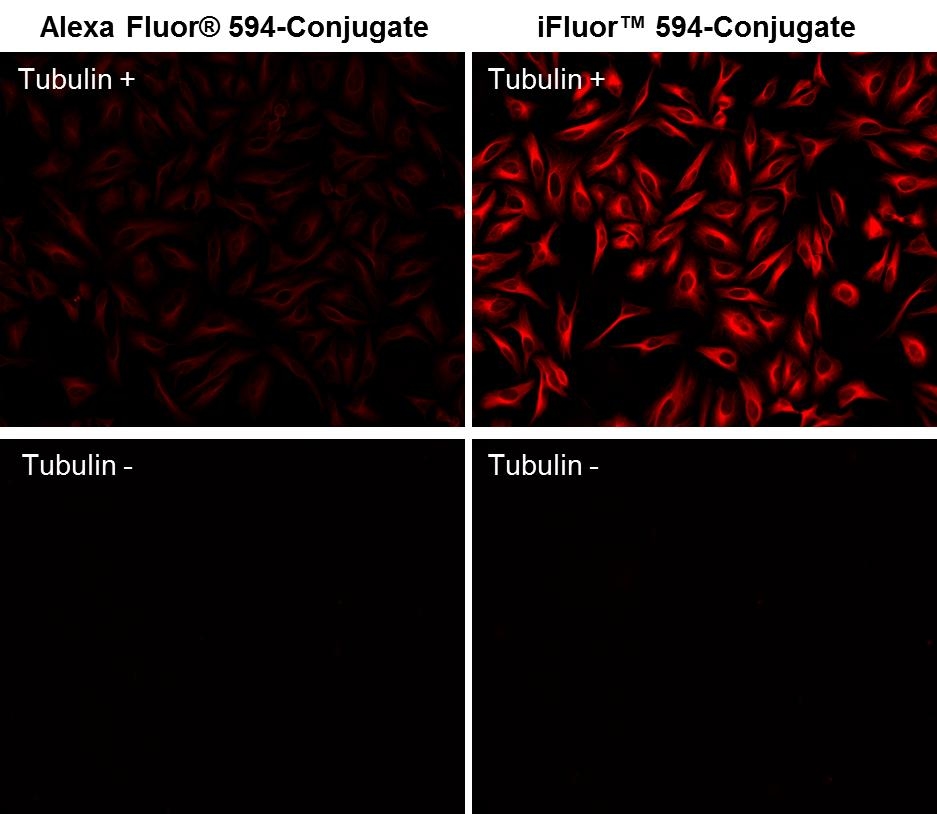iFluor® 594 maleimide
AAT Bioquest's iFluor® dyes are optimized for labeling proteins, particularly antibodies. iFluor® 594 dyes have fluorescence excitation and emission maxima of ~588 nm and ~604 nm respectively. iFluor® 594 family has spectral properties similar to those of Texas Red® and Alexa Fluor® 594 (Texas Red® and Alexa Fluor® 594 are the trademarks of Invitrogen). iFluor® 594 family is pH-independent from pH 3 to 11. These spectral characteristics make this new dye family an excellent alternative to Texas Red® and Alexa Fluor® 594. Compared to Texas Red®, iFluor® 594 is much easier to conjugate with RPE with a much higher conjugation yield, and the resulting RPE-iFluor® 594 tandem has better FRET efficiency. iFluor® 555 maleimide is reasonably stable and shows good reactivity and selectivity with a thiol group.


| Catalog | Size | Price | Quantity |
|---|---|---|---|
| 1064 | 1 mg | Price |
Physical properties
| Molecular weight | 1097.12 |
| Solvent | DMSO |
Spectral properties
| Absorbance (nm) | 587 |
| Correction factor (260 nm) | 0.05 |
| Correction factor (280 nm) | 0.04 |
| Extinction coefficient (cm -1 M -1) | 200000 1 |
| Excitation (nm) | 587 |
| Emission (nm) | 603 |
| Quantum yield | 0.53 1 |
Storage, safety and handling
| H-phrase | H303, H313, H333 |
| Hazard symbol | XN |
| Intended use | Research Use Only (RUO) |
| R-phrase | R20, R21, R22 |
| Storage | Freeze (< -15 °C); Minimize light exposure |
| UNSPSC | 12171501 |
Documents
Contact us
| Telephone | |
| Fax | |
| sales@aatbio.com | |
| International | See distributors |
| Bulk request | Inquire |
| Custom size | Inquire |
| Technical Support | Contact us |
| Request quotation | Request |
| Purchase order | Send to sales@aatbio.com |
| Shipping | Standard overnight for United States, inquire for international |
Page updated on November 2, 2025

